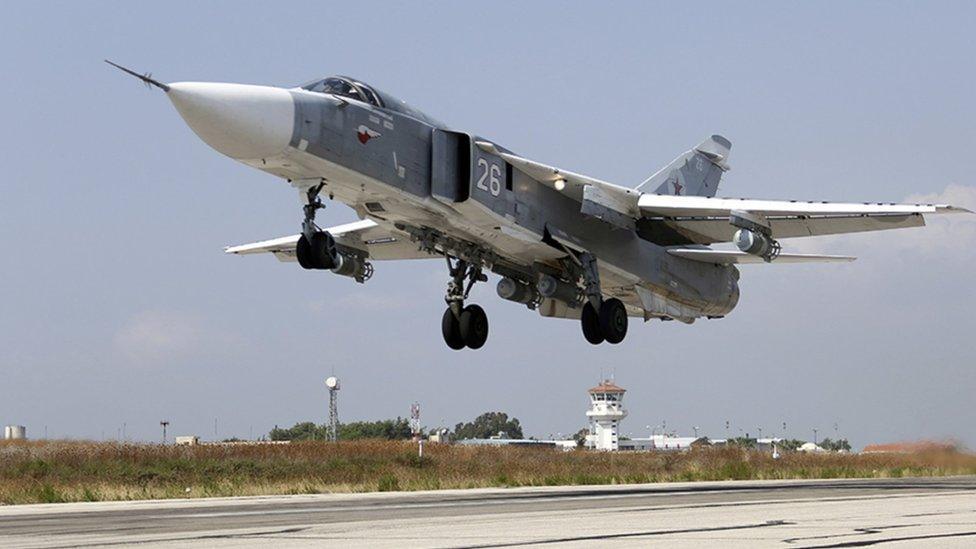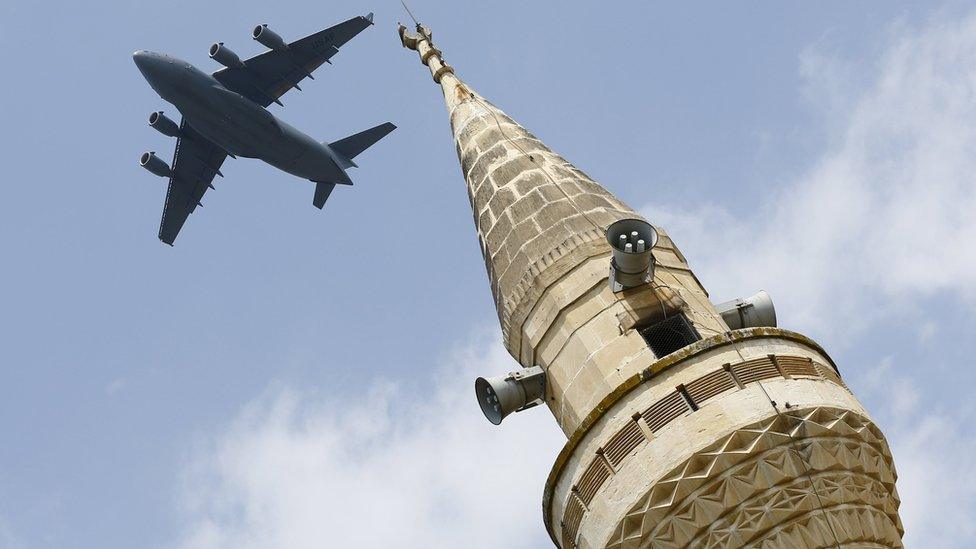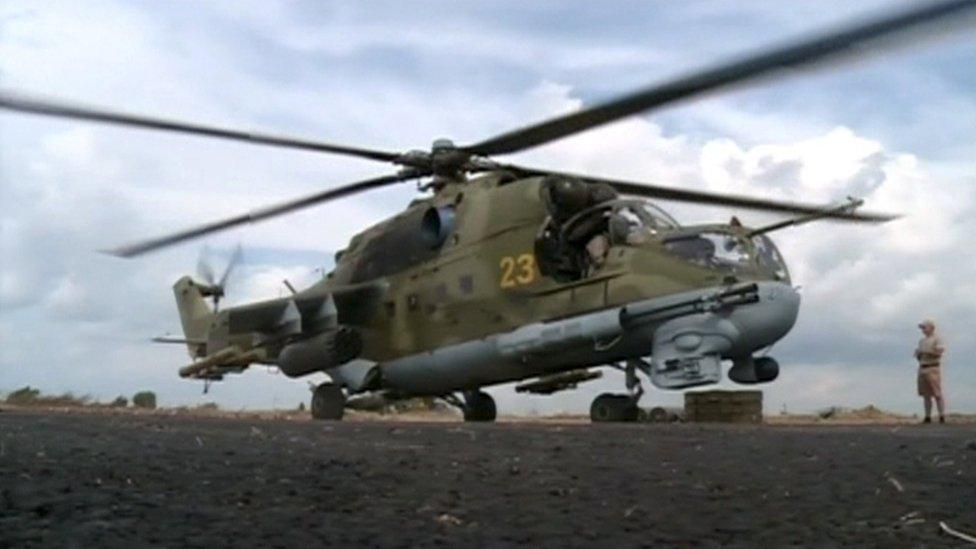Should there be a no-fly zone over Syria?
- Published

Russia's air campaign in Syria began a little under two weeks ago
US Secretary of State John Kerry last week reportedly instructed his staff to revisit plans for the establishment of a no-fly zone over Syria, external.
Influential figures such as former US Secretary of State Hillary Clinton and Turkish President Recep Tayyip Erdogan have long supported the establishment of a no-fly zone, but the White House has been reticent.
Mr Kerry's comments now revive one of the longest-running policy debates of the Syrian civil war, and also one of the most opaque.

What is the difference between a no-fly zone and a buffer zone?
A no-fly zone would ensure that aircraft of the warring parties are not allowed to enter the designated space. A no-fly zone would not, however, prevent the continuation of hostilities on the ground.
A buffer zone, or a safe haven, would require intervention to ensure that such fighting is brought to an end. The UN-recognised designation of a safe haven would also require a UN Security Council resolution, but this is unlikely, as any resolution would almost certainly be blocked by Russia and China.

What are the arguments for and against?
Various justifications have been cited for such a policy, from the protection of civilians, to the support of the rebels and the defeat of the so-called Islamic State (IS, also known as Isil).
In July, President Erdogan struck a deal which would allow the US Air Force the use of the Incirlik air force base as a launch pad for airstrikes on IS. Reports in Turkey signalled that the deal was aligned to an agreement to establish a no-fly zone between Mare and Jerablus in northern Syria, an area approximately 90km by 40km-50km (60 miles by 25-30 miles). Yet this never materialised.

A US Air Force plane flies over a minaret after taking off from Incirlik air base on 12 August
There were differences in the military objectives of the two states. Turkey argued for a buffer zone on the basis that it will support the rebels to topple the regime of Syrian President Bashar al-Assad, although critics allege that it is more likely to be targeted at hindering the ambitions of Syrian Kurdish forces.
The US focus on IS led it to refer to the establishment of an "Isil-free zone". Yet with no agreement over who would constitute the force on the ground, the initiative soon fizzled out.
Humanitarian considerations are also regularly cited in favour of no-fly zones and buffer zones (often also known as "humanitarian corridors" or "safe zones"). No-fly zones in particular have been presented as an option that could bring an end to the Syrian regime's campaign of barrel bombs that are killing 200 civilians a week.
But there is currently no prospect of a no-fly zone in the areas where this bombing is concentrated. In any case, it would not protect civilians from warring parties continuing the fight on the ground. In 1995, the massacre of more than 8,000 Bosniaks in Srebrenica took place in a Nato-enforced no-fly zone.
Turkey has argued that a buffer zone would allow Syrians to return to their homeland. Yet experts warn that the situation is not that simple and that it could become a guise for the forced return of refugees to areas that are not in fact "safe".

What is the likelihood of this happening?
Without agreement over a mutually acceptable force to prevent hostilities, any discussion over the imposition of a buffer zone is fundamentally flawed.

A Russian air force helicopter is seen on the tarmac of Hmeimim air base near the Syrian port town of Latakia
Given the reluctance of Western governments to place "boots on the ground", this has been viewed as a political non-starter for the US, the UK and their coalition partners. There is also no agreement over which Syrian partners would be acceptable to enforce a buffer zone on the ground.
The introduction of Russian forces into Syria has further complicated the establishment of any form of no-fly zone. In addition to engaging in air strikes against rebel forces who oppose Assad, Russia is also reportedly set to supply an advanced anti-aircraft missile system to Syria. This would make the risks to coalition aircraft enforcing a no-fly zone acute and raise the dangerous prospect of contact between Russian and coalition aircraft.
Mr Kerry's renewed focus on the issue cannot ignore the fact that the US and its allies felt unable to commit the necessary resources prior to Russia's intervention for a no-fly zone. Russia's actions seemingly make this prospect even more remote.
Tim Eaton is Project Manager for the Syria and Its Neighbours Policy Initiative at Chatham House, external.